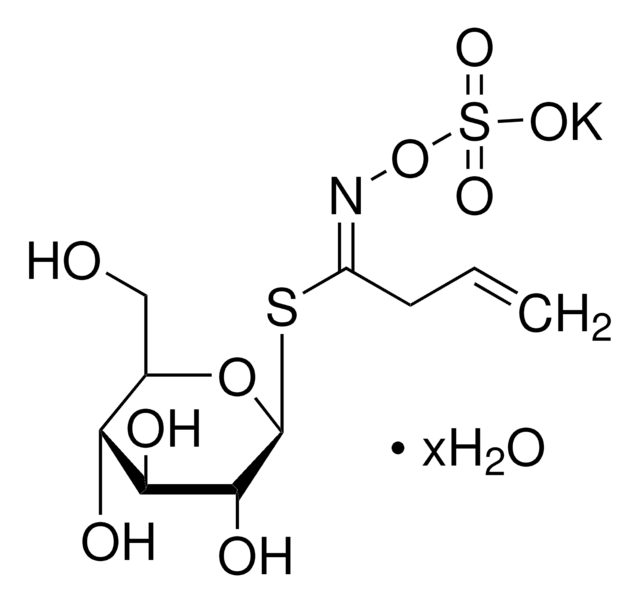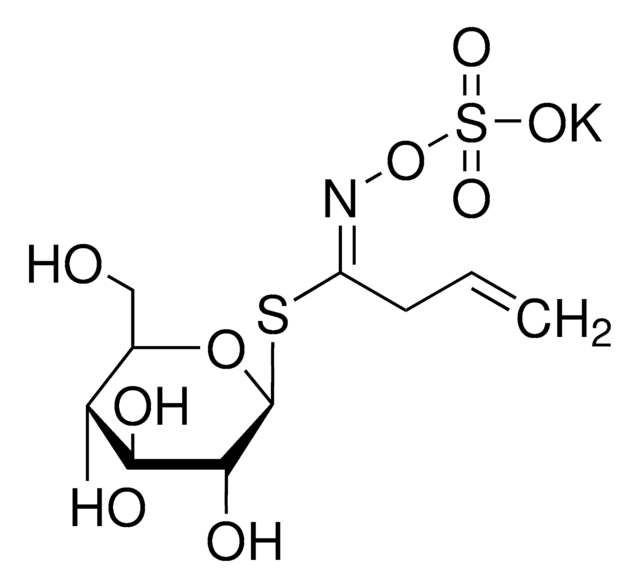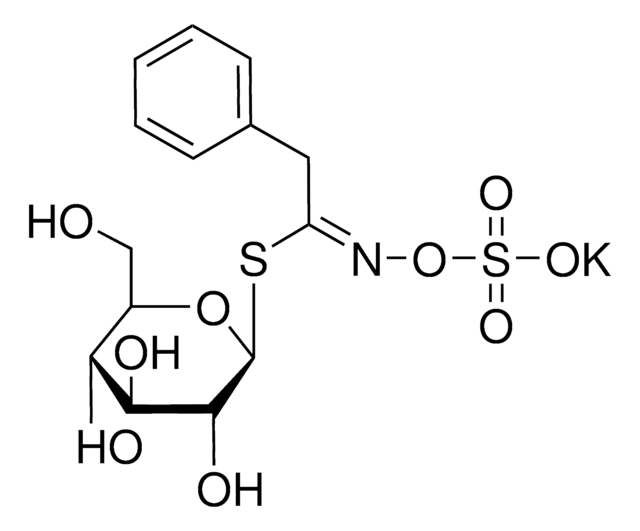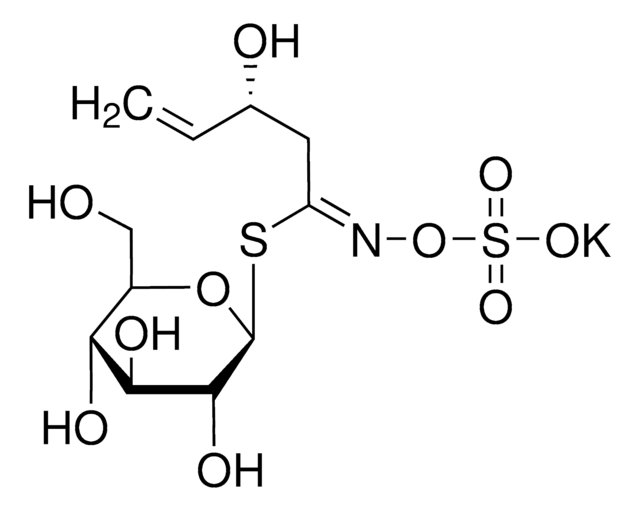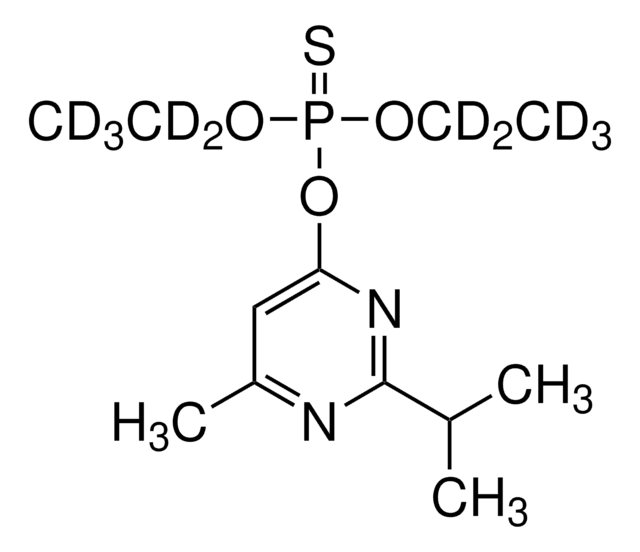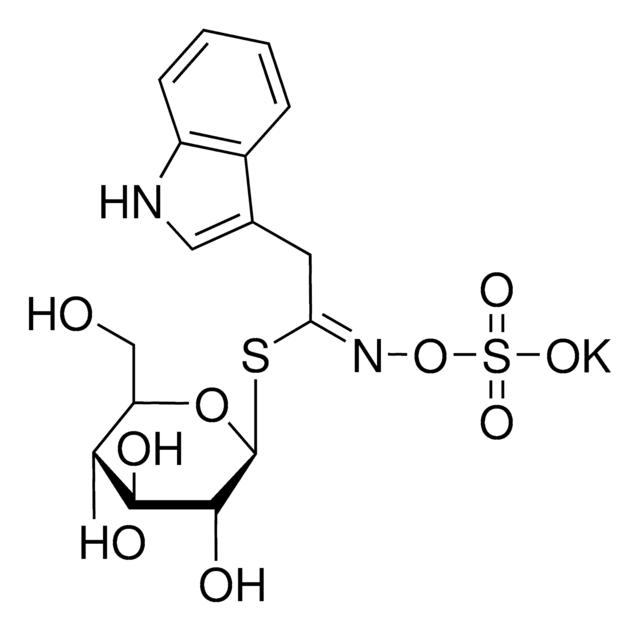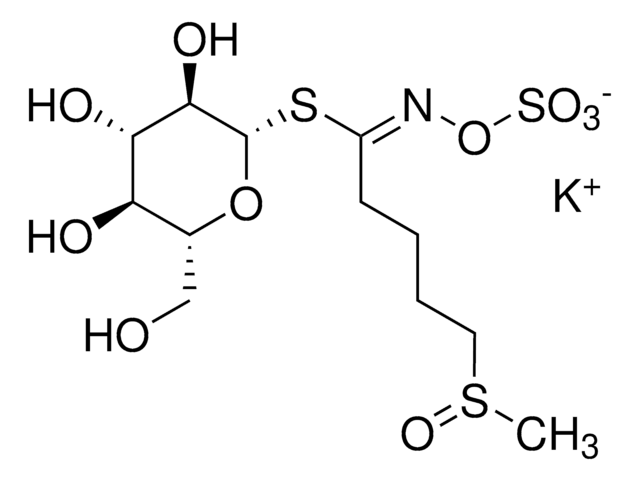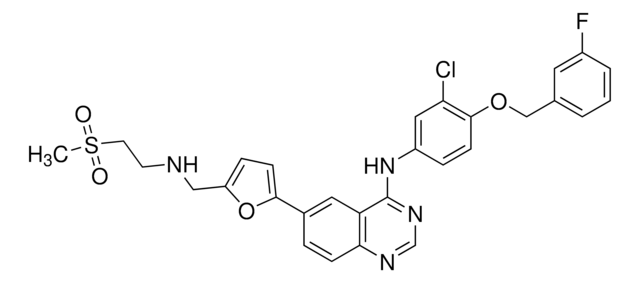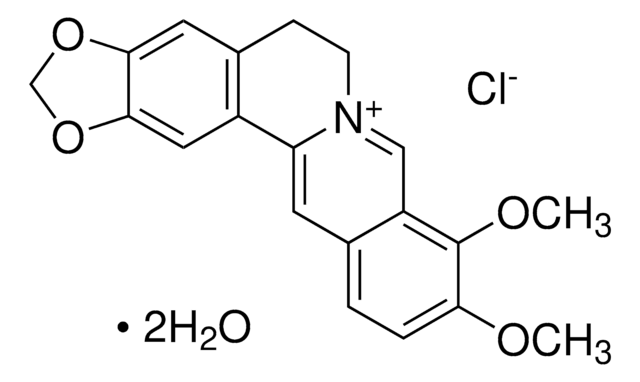S1647
(−)-Sinigrin hydrate
≥98% (HPLC), from horseradish
About This Item
Productos recomendados
biological source
horseradish
Quality Level
assay
≥98% (HPLC)
form
powder
technique(s)
HPLC: suitable
color
white
mp
128 (dec.) (lit.)
solubility
water: 50 mg/mL, clear, colorless to faintly yellow
cation traces
K: 8.4-10.8% (anhydrous)
storage temp.
room temp
SMILES string
[K+].[H]O[H].OC[C@H]1O[C@@H](S\C(CC=C)=N\OS([O-])(=O)=O)[C@H](O)[C@@H](O)[C@@H]1O
InChI
1S/C10H17NO9S2.K.H2O/c1-2-3-6(11-20-22(16,17)18)21-10-9(15)8(14)7(13)5(4-12)19-10;;/h2,5,7-10,12-15H,1,3-4H2,(H,16,17,18);;1H2/q;+1;/p-1/b11-6+;;/t5-,7-,8+,9-,10+;;/m1../s1
InChI key
IUBVMJHASFBYGW-WBMBWNLZSA-M
¿Está buscando productos similares? Visita Guía de comparación de productos
Biochem/physiol Actions
Other Notes
Related product
signalword
Warning
hcodes
Hazard Classifications
Skin Sens. 1
Storage Class
11 - Combustible Solids
wgk_germany
WGK 3
flash_point_f
Not applicable
flash_point_c
Not applicable
ppe
Eyeshields, Gloves, type N95 (US)
Elija entre una de las versiones más recientes:
¿Ya tiene este producto?
Encuentre la documentación para los productos que ha comprado recientemente en la Biblioteca de documentos.
Los clientes también vieron
Nuestro equipo de científicos tiene experiencia en todas las áreas de investigación: Ciencias de la vida, Ciencia de los materiales, Síntesis química, Cromatografía, Analítica y muchas otras.
Póngase en contacto con el Servicio técnico